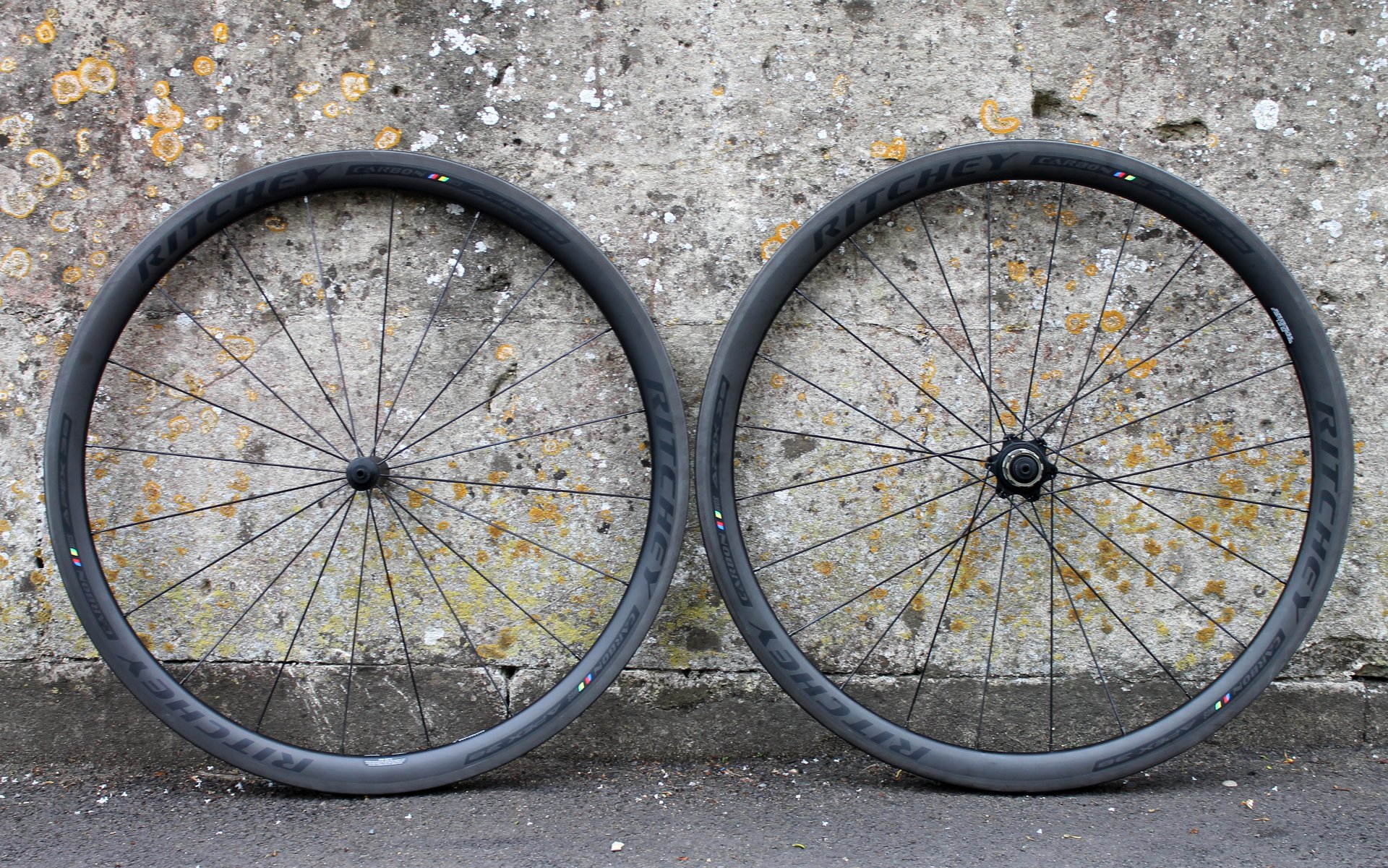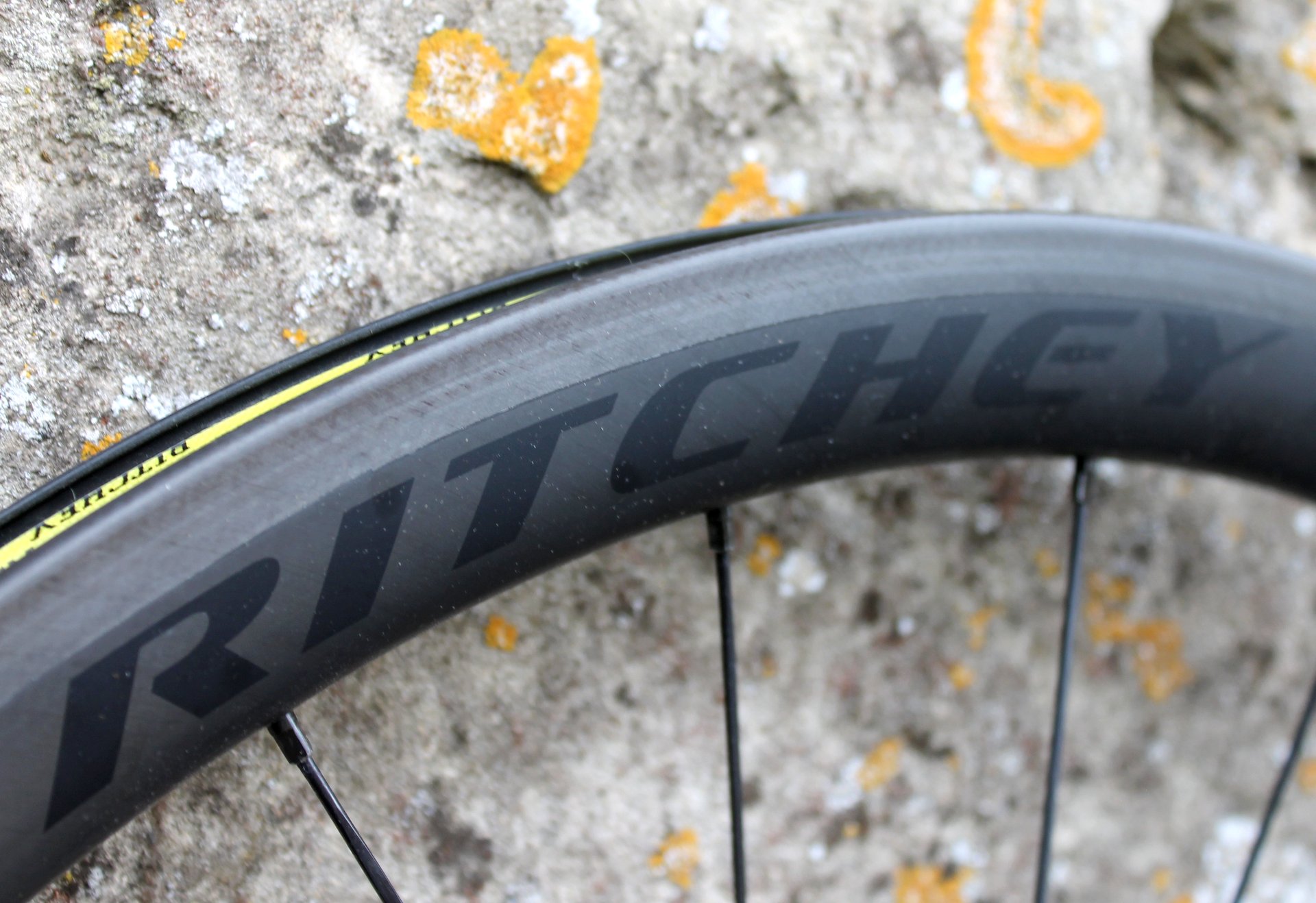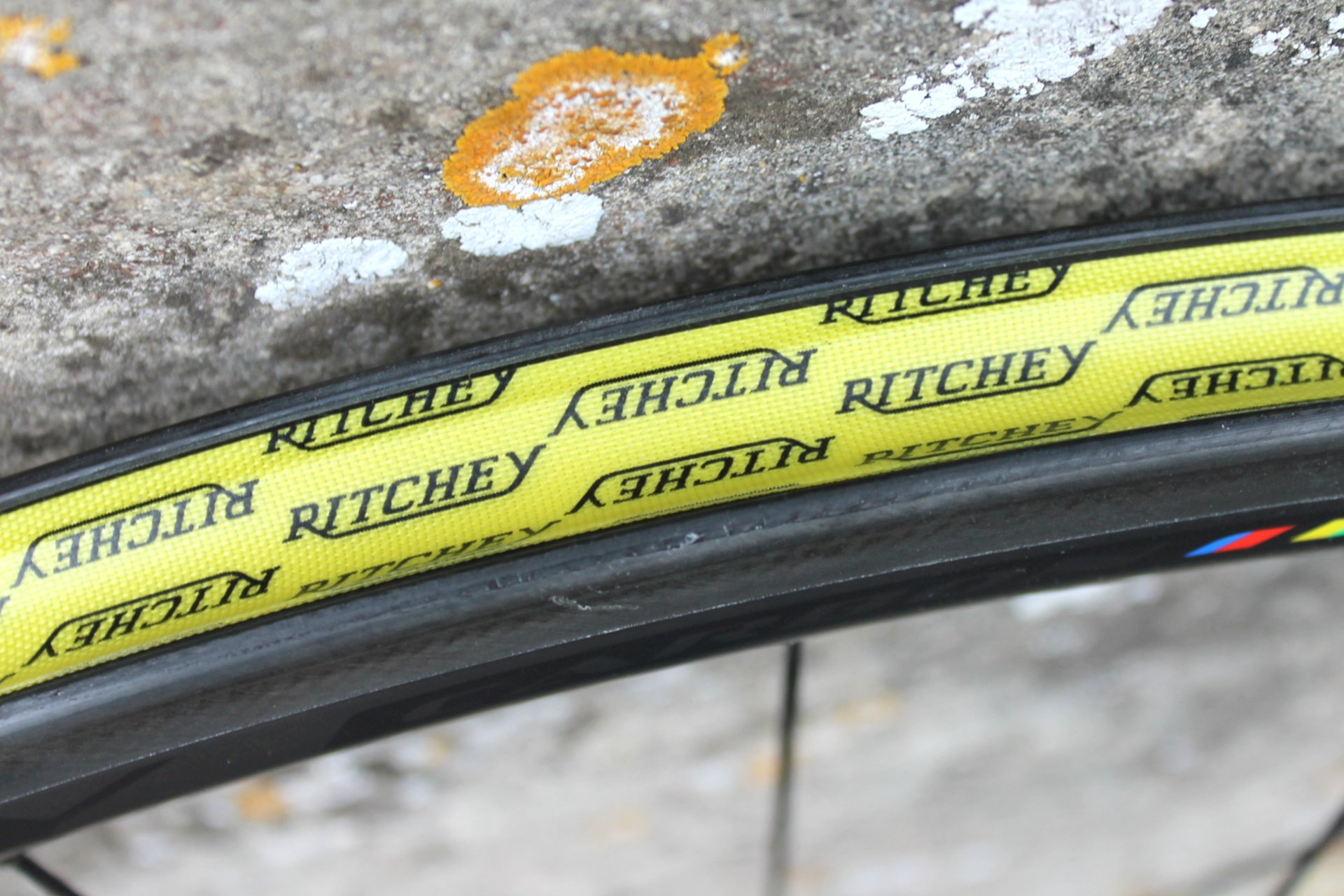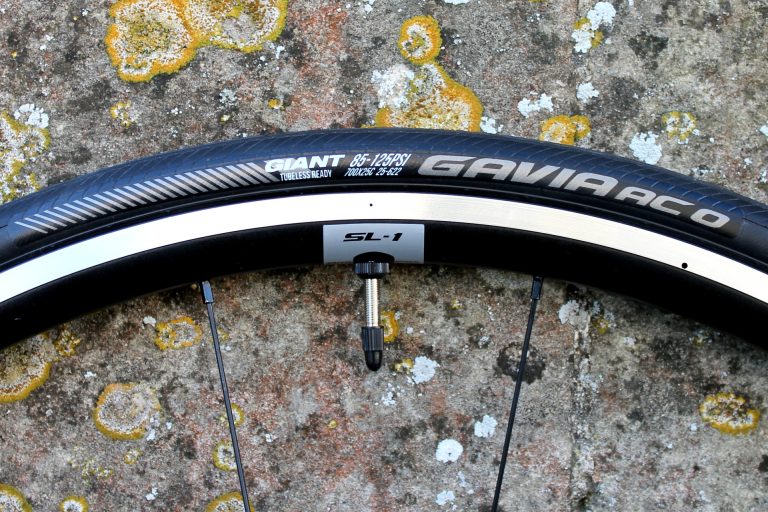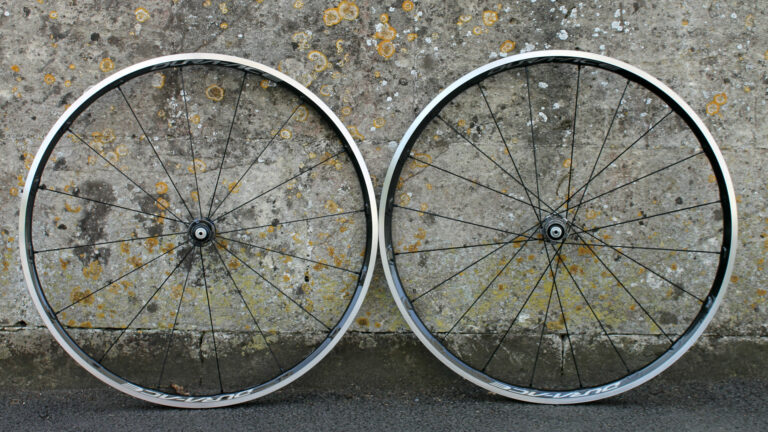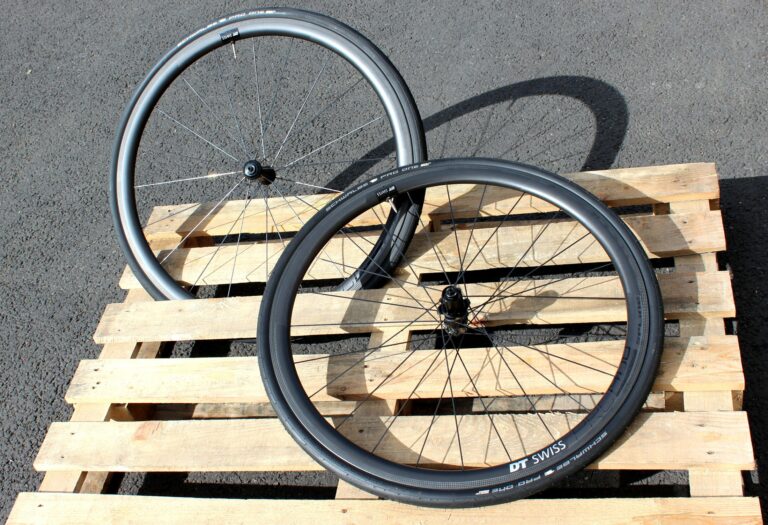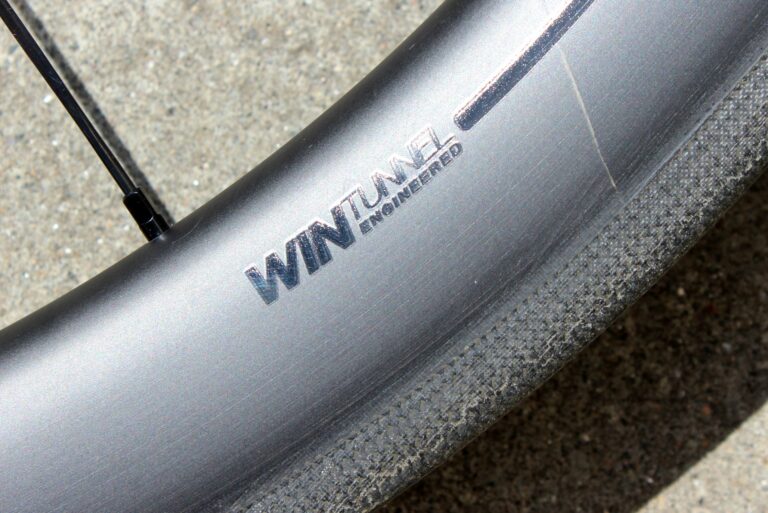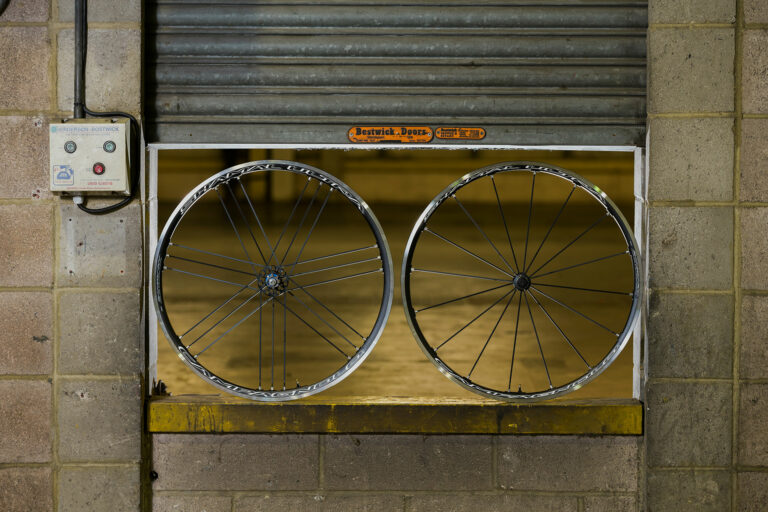Tubeless-ready with quality components
The spec sheet on the WCS Apex IIs certainly sounds up-to-date, as well as high quality. First off, they’re tubeless-ready, which means you’re catered for if you want to take advantage of the benefits of running lower pressures as well as jettisoning the inner tube.
The rims are designed to run best with 25c tyres, with an inner rim diameter of 18.4mm, although the outer rim width measures 26mm, meaning even wider 28c tyres are certainly an option, too – perfect if comfort matched with low rolling resistance is high on your list of desirable ride qualities.
-
Specification
- Price: £1,429 (Shimano/SRAM), £1,499 (Campagnolo)
- Weight: 1,560g (685g front; 875g rear – excluding rim tape)
- Rim depth: 38mm
- Rim width: 26mm external; 18.4mm internal
- Website: Ritchey Logic
Hidden under the tubeless rim tape are straight-pull DT Swiss New Aero spokes in a 20/24 layout, which are light as well as bladed to cut through the air, and they attach to Ritchey’s own WCS hubs.
Those hubs are known as ‘Phantom flange’ hubs, which are said to boost the reliability of the whole wheelset. How? By forging in a flange contour into the alloy hub body, while also featuring a machined recess for an increased spoke bracing angle. Supposedly, this results in less material at the hub for a little weight saving, while Ritchey also claims this design actually boosts strength ,too.
That should also result in high levels of stiffness that, in the rear wheel, transfers energy efficiently from the drivetrain. Up front, we can reasonably expect sharp and direct responsiveness, as well as the potential to maximise quick steering input from the frame they’re attached to.
As with many rim-brake carbon clincher hoops, the Apex IIs feature their own proprietary brake track, with a carbon material and resin that supposedly has a higher melting point for increased reliability.
Most manufacturers have spent considerable time developing this area of carbon rim brake wheel design in recent years (both for reliability and braking performance), so it’s important they’re able to stand up to the competition given the £1,429/£1,499 (SRAM & Shimano/Campagnolo) asking price.
